Preliminary report on the 2016 breeding season
The primary aim of BTO surveys is to monitor changes in the health of Britain’s birds, tracking declines and increases via the BTO/JNCC/RSPB Breeding Bird Survey and exploring the factors driving them through bird ringing and nest recording. The long-term trends in abundance, survival and breeding success generated by these schemes are presented on the BirdTrends webpages.
This report provides a preliminary assessment of the 2017 breeding season in terms of population sizes and breeding success, comparing this year’s results to the averages recorded over the previous five seasons.
How do we monitor the breeding season?
of fledglings in 2016 was around 20% lower than average
All of the data presented here are collected by BTO volunteer ringers and nest recorders and we are extremely grateful for their efforts, both in collecting the data and submitting it promptly. Numbers of adult birds are monitored by qualified bird ringers running a network of approximately 140 Constant Effort Sites (CES) across Britain & Ireland between May and August. As their effort is standardised annually, the number of birds caught in each year provides an accurate measure of changes in abundance. Recaptures of birds ringed in previous years also allow survival rates to be calculated. The timing of nesting and the number of fledglings reared during each breeding attempt is monitored by over 700 participants in the Nest Record Scheme (NRS), each of whom locates nests to count the eggs and young inside at regular intervals. The ratio of juvenile to adult birds caught on CESs provides a second measure of breeding success that also takes into account the number of successful breeding attempts made per adult (as many species attempt to rear more than one brood per season) and the survival of young birds immediately after fledging.
CES covers 24 woodland, scrub and reedbed species, while NRS covers 150 species breeding across all habitats, from gardens to remote hillsides. Not all of the CES and NRS data collected in 2016 have been received yet, so these results are based on a subset of sites and species for which we currently hold sufficient data to analyse.
What was the weather like in 2016?
Winter 2015–16 was the third warmest since 1910 for the UK as a whole, and the warmest ever for England and Wales (mostly due to exceptionally high temperatures in December 2015). For Wales, Scotland and Northern Ireland, it was also the wettest on record, and it was the second wettest for the UK as a whole.
Mean spring temperatures were more typical, falling slightly below average in April and rising slightly above in May (Figure 1a). Breeding season rainfall varied dramatically between countries and months, however (Figure 1b,c,d). Southern and eastern England experienced a wet March, April and June, with a brief respite in May, whilst heavy rainfall in northern England and Scotland was limited to April. In July and August the trend reversed, with above average rainfall in the north but exceptionally dry conditions in the south, where summer temperatures were also above average.
Migrant numbers bounce back
than in any year since the scheme began in 1983
CES results show that 2016 was a good year for both short- and long-distance migrants. Five of the eight migrants monitored exhibited statistically significant increases in abundance in 2016 when compared to the five-year mean (2011–15) (Table 1). Chiffchaff was recorded in the greatest numbers since 1983, when the survey began, and survival rates were also the highest on record, indicating that they fared well over the winter months. Warmer than average conditions across much of the Northern Hemisphere in winter 2015–16 may have helped to bolster survival rates for this species, that winters around the Mediterranean basin and North Africa, and may also have benefited Blackcap. The increased abundance of Lesser Whitethroat, Sedge and Reed Warbler may be related to the wet growing season in the Sahel during 2015, which also produced good harvests for farmers in the region.
Only Whitethroat exhibited a statistically significant decrease in abundance. This is the fourth consecutive season that numbers of this species have fallen significantly below the five-year average. Although recent declines may be exaggerated by an exceptionally good year for this species in 2011 which will have inflated the five-year mean abundance figures; the long-term (1983–2015) CES abundance trend shows that Whitethroat is declining, albeit with large annual fluctuations.
Table 1. Adult abundance and breeding success calculated from 2016 CES data. Figures represent a percentage change relative to the five-year average (2011–15), with lower and upper 95% Confidence Intervals given in brackets. Statistically significant (p < 0.05) positive and negative changes are highlighted in blue and red respectively. '*' denotes a small sample size..
|
Species |
Adult abundance change (%) |
Productivity change (%) |
||
|
Migrant warblers |
||||
|
Chiffchaff |
22 |
(14, 32) |
-13 |
(-21, -5) |
|
Willow Warbler |
-7 |
(-14, 1) |
15 |
(4, 28) |
|
Blackcap |
17 |
(10, 23) |
-47 |
(-51, -42) |
|
Garden Warbler |
-5 |
(-16, 8) |
-20 |
(-35, -2) |
|
Lesser Whitethroat* |
29 |
(7, 56) |
-19 |
(-39, 7) |
|
Whitethroat |
-12 |
(-20, -2) |
-16 |
(-27, -4) |
|
Sedge Warbler |
13 |
(5, 21) |
-16 |
(-25, -7) |
|
Reed Warbler |
23 |
(17, 29) |
-29 |
(-33, -23) |
|
Resident tits |
||||
|
Blue Tit |
-11 |
(-18, -4) |
-31 |
(-38, -23) |
|
Great Tit |
-7 |
(-15, 3) |
-22 |
(-31, -11) |
|
Willow Tit* |
99 |
(13, 251) |
-10 |
(-56, 82) |
|
Long-tailed Tit |
8 |
(-2, 20) |
-13 |
(-24, -1) |
|
Other residents |
||||
|
Cetti's Warbler* |
65 |
(37, 100) |
-27 |
(-46, -2) |
|
Treecreeper* |
19 |
(-8, 53) |
-20 |
(-43, 11) |
|
Wren |
39 |
(29, 50) |
-22 |
(-29, -15) |
|
Blackbird |
1 |
(-7, 9) |
-18 |
(-27, -7) |
|
Song Thrush |
26 |
(11, 42) |
-26 |
(-40, -9) |
|
Robin |
36 |
(24, 49) |
-21 |
(-29, -12) |
|
Dunnock |
11 |
(2, 20) |
-23 |
(-32, -14) |
|
Chaffinch |
-6 |
(-17, 6) |
-23 |
(-37, -6) |
|
Greenfinch |
4 |
(-15, 27) |
-63 |
(-75, -46) |
|
Goldfinch |
6 |
(-10, 26) |
5 |
(-22, 43) |
|
Bullfinch |
3 |
(-6, 13) |
-12 |
(-24, 2) |
|
Reed Bunting |
5 |
(-6, 17) |
6 |
(-13, 28) |
Mixed year for residents
in a reduction in the number of chicks fledged
While productivity in 2015 was generally poor, numbers of many resident species were higher than average this year, suggesting that clement conditions post-breeding had increased survival rates of adults and/or their young. The species that benefitted most from the 2015–16 mild winter, with little or no snow cover, were ground feeders including Song Thrush, Robin and Dunnock, and species such as Wren and Cetti’s Warbler, both of which are particularly sensitive to harsh winter weather (Table 1). Abundance was significantly above average for all five of these residents and also for Willow Tit, although results for this species should be interpreted with caution due to the small sample size.
By contrast, 2016 was a poor year for Blue and Great Tits, the former in particular exhibiting a significant drop in abundance nationally, driven by reductions in northern and western UK. As with Whitethroat, it is possible that the mean for this species is still inflated following a particularly good year in 2011. BirdTrack records show that recording rates for Blue Tit in 2016 were below average throughout the year when compared to the historical trend; however, this trend is calculated for 2010–15 and both 2010 and 2011 were good years for this species. Survival rates for both tits did not differ significantly from the five year mean, suggesting that decreased abundance may have been due to a lack of recruitment following last season’s poor breeding season.
Late start to the breeding season…again
NRS data indicate that two short-distance migrants, Chiffchaff and Blackcap, and one long-distance migrant, Pied Flycatcher, bred significantly later in 2016 than they have in recent years (Table 2, Figure 2). The delay was more marked in the short-distance migrants (8.4 and 9 days respectively) than for Pied Flycatcher (2.4 days). BirdTrack data show that arrival dates for both Chiffchaff and Blackcap were slightly delayed in 2016, possibly due to conditions on northwards passage, and egg production is likely to have been delayed further by the low April temperatures. In contrast, Pied Flycatcher arrival dates were close to the mean, as were temperatures in May when the birds would have been laying. Laying dates for six resident passerines, including both Blue and Great Tit, were delayed by between five and 10 days in 2016, with low temperatures in early spring again being the most likely cause, although the multi-brooded Linnet and House Sparrow may also have taken advantage of the fine late summer weather to initiate a greater than average number of late attempts.
By far the most delayed breeder in 2016 was Barn Owl; the mean laying date occurred 25 days later than the five-year average and was the latest recorded since the Nest Record Scheme began in 1939 (Table 2, Figure 2). Despite the cold, wet start to the spring, initial signs looked promising for an early season in some parts of the UK, though the chilly end to the month may have postponed breeding in others. The mild conditions in late summer and autumn, combined with increasingly buoyant prey populations, are likely to have stimulated a large proportion of birds to produce second broods, thus shifting the average laying date later into the year. Mean laying dates were also the latest on record for Woodpigeon, another multi-brooded species that could potentially take advantage of clement conditions at the tail end of the season.
Unlike the other migrants discussed above, BirdTrack records show that Sand Martins arrived early in 2016 and this was one of only two species that bred significantly earlier than the five year mean in 2016 (Table 2). However, both Sand Martin and the other apparent early breeder, Reed Bunting, are likely to have been impacted by the wet June weather, with rainfall hampering feeding in the former and leading to inundation of nest sites in the latter; resultant reduction in repeat brood production could manifest as an advance in average laying dates. Such a bias towards early broods, which are generally more productive than later attempts, could also explain the significant increase in the number of fledglings produced per breeding attempt recorded for Sand Martin.
Table 2. Laying dates and breeding success calculated from 2016 NRS data. Laying dates are given as the number of days earlier or later than the five-year average (2011-15) while productivity figures represent a percentage change relative to the five-year average. Statistically significant (p < 0.05) positive and negative changes are highlighted in blue and red respectively. ‘*’ denotes small sample size (< 25 records).
|
Species |
Laying date days |
Clutch size % |
Brood size % |
Egg stage survival % |
Chick stage survival % |
Fledglings produced % |
|---|---|---|---|---|---|---|
Migrants |
||||||
| Sand Martin | -6.8 | 3.3 | 1.1 | 5.9 | 1.7 | 8.9 |
| Swallow | -0.8 | 1.3 | 0.7 | -2.1 | -2.3 | -3.7 |
| Chiffchaff | 8.4 | -1.0 | -2.9 | -6.2 | 4.8 | -4.5 |
| Willow Warbler | -2.0 | 4.1 | 0.9 | -15.6 | -0.6 | -15.4 |
| Blackcap | 9.0 | -0.9 | -6.9 | -5.5 | -7.6 | -18.7 |
| Reed Warbler | -0.7 | -3.7 | -1.2 | -15.4 | -18.6 | -32.0 |
| Spotted Flycatcher | 1.4 | 0.9 | 7.4 | -14.2 | -10.9 | -17.9 |
| Pied Flycatcher | 2.4 | -0.7 | -0.4 | 0.3 | -2.1 | -2.2 |
| Redstart | 0.9 | 2.8 | -3.9 | 9.8 | 8.0 | 14.0 |
Tits |
||||||
| Blue Tit | 6.0 | -5.3 | -9.2 | 0.6 | -3.7 | -12.0 |
| Great Tit | 5.1 | -7.6 | -6.2 | 0.7 | 1.7 | -3.9 |
| Long-tailed Tit | 2.9 | -6.7 | -10.5 | 4.8 | 3.0 | -3.4 |
Other resident passerines |
||||||
| Jackdaw | 0.3* | -6.2 | -3.6 | -6.2 | -9.6 | -18.3 |
| Raven | 9.8* | -1.5* | 16.0 | 1.0 | 4.8 | 22.8 |
| Nuthatch | 5.9 | -0.9 | -3.8 | 3.6 | 1.1 | 0.8 |
| Wren | 4.3 | -4.1 | 0.1 | 8.5 | 0.1 | 8.7 |
| Starling | 0.0 | 3.8 | 10.4 | 2.6 | 1.1 | 14.6 |
| Dipper | -1.3 | -2.6 | 4.1 | -5.7 | -7.4 | -9.2 |
| Blackbird | -1.0 | -1.8 | -0.5 | -9.2 | -15.3 | -23.5 |
| Song Thrush | -1.3 | -1.7 | -0.3 | 0.5 | -10.8 | -10.7 |
| Robin | -2.8 | -4.0 | -1.5 | -0.4 | -9.5 | -11.2 |
| Stonechat | 3.1 | -1.3 | -3.6 | 7.5 | 4.9 | 8.7 |
| Dunnock | -0.2 | -6.2 | -3.1 | 8.6 | 5.3 | 10.8 |
| House Sparrow | 8.6 | -2.7 | 3.2 | -0.6 | 1.0 | 3.6 |
| Tree Sparrow | -0.9 | -1.3 | -0.3 | 0.7 | 0.1 | 0.5 |
| Grey Wagtail | -2.1 | -2.1 | 4.0 | -0.7 | -9.5 | -6.5 |
| Pied Wagtail | 5.7 | -2.2 | -2.9 | 4.5 | 1.4 | 2.9 |
| Meadow Pipit | 0.0 | 6.7* | 1.2 | 35.3 | -14.6 | 17.0 |
| Chaffinch | 10.1 | 4.7 | -1.8 | 5.6 | 26.1 | 30.8 |
| Linnet | 7.2 | 2.7 | -1.4 | -3.5 | 21.5 | 15.7 |
| Reed Bunting | -8.8 | 3.2 | 3.2 | -18.8 | -46.7 | -55.3 |
Resident non-passerines |
||||||
| Stock Dove | -3.2 | 3.4 | -2.6 | -10.1 | 9.0 | -4.6 |
| Woodpigeon | 13.4 | -2.2 | 0.4 | -25.5 | -24.4 | -43.5 |
Owls and raptors |
||||||
| Buzzard | 7.3* | -32.0 | -10.0 | -4.6 | -9.4 | -22.2 |
| Barn Owl | 24.8* | -4.7 | -18.9 | 2.0 | -0.4 | -17.6 |
| Little Owl | 7.6* | -1.8 | -1.9 | 5.4 | 5.3 | 8.9 |
| Tawny Owl | 14.5* | -11.8 | -14.7 | 7.9 | 3.6 | -4.7 |
| Kestrel | -0.8* | -4.3 | -8.5 | 2.9 | 1.7 | -4.3 |
| Peregrine | -5.8* | 12.7* | 8.4 | 8.1 | 5.5 | 23.7 |
Waterbirds |
||||||
| Moorhen | 3.4 | 2.2 | -19.2* | -35.1 | 17.4 | -38.5* |
| Coot | -1.7 | -5.3 | 2.0 | -37.2 | 12.6 | -27.9 |
Waders |
||||||
| Oystercatcher | -3.0 | -1.2 | -11.1 | |||
| Lapwing | -2.4* | -2.4 | -17.2 | |||
Another poor breeding season
calculated using CES data, b) Blackbird and c) Reed Bunting FPBA
calculated from NRS data (2015 data points are shown in red)..
The number of red-highlighted declines in Tables 1 and 2 above indicate just how poor the breeding season was in 2016. CES results reveal that 17 out of the 24 species monitored through that survey exhibited statistically significant decreases in productivity in 2016 relative to the five year average. NRS data show that for some of these species (Reed Warbler, Blue Tit, Blackbird) a reduction in the number of young fledged may be responsible for this decline in productivity; for Blue Tit the mechanism appears to have been a reduction in mean clutch size, leading to a reduced mean brood size, both values being the lowest recorded since the initiation of the NRS in 1939. However, the greater prevalence of significant reductions in the CES dataset suggests that the wet conditions mid-summer also reduced post-fledging survival rates of both residents and migrants, increasing energetic costs and reducing prey accessibility for these largely insectivorous species.
Egg and chick stage survival did not appear to play a key role in reduced productivity in passerines. Reed Warbler and Reed Bunting were the exceptions as heavy rains in June resulted in many nests being washed out, giving rise to a 32% and 55% reduction in FPBA respectively for these species. Perhaps surprisingly, given Reed Bunting FPBA was lower and its young stage failure rate was higher than in any previous year, this did not result in a decrease in productivity on CE sites. It is possible that density dependence contributed to the reduction in productivity for those species recorded in above average numbers at the start of the season, increased competition between pairs resulting in a decrease in the number of young raised by each.
The only species to produce an above average number of fledglings per attempt were Sand Martin and Redstart, while the only species to exhibit an increase in productivity on CE sites was Willow Warbler. As discussed above, the Sand Martin results may be an artefact of a reduction in late brood production, but Redstart and Willow Warbler are predominantly single-brooded in the UK. It is unclear why Redstart experienced such a successful season but the increase in Willow Warbler productivity was driven by results in Scotland, which, as recent research shows, is the stronghold for this species and experienced a much less extreme summer than England and Wales.
CES data indicate that the breeding season was relatively more successful in the north in 2016, with only Blackbird, Chaffinch and Greenfinch exhibiting statistically significant decreases in productivity. This may be due to the drier conditions experienced in northern England and Scotland throughout spring and early summer.
Non-passerines
Poor egg-stage survival affected both waterbirds monitored through NRS, Moorhen and Coot, which exhibited their lowest egg stage survival rate since the NRS began due to the flooding caused by heavy rains in April and June. These persistent spells of wet weather may also have negatively impacted on the body condition of female raptors and owls, leading to reduced clutch and brood sizes in four of the six species shown in Table 2.
Join us in monitoring birds in 2017!
The records used to produce the NRS results are generated by over 700 NRS volunteers, who monitor nests ranging from Blue Tit boxes in gardens to seabird colonies on cliffs. If you haven't tried nest recording before, why not give it a go? Email us for a Quickstart Guide or visit the NRS web pages to find out more.
If you are a qualified ringer with access to an area of scrub, woodland or reedbed where there is the potential to catch at least 250 birds per season, why not register a CES? And if you aren’t able to start your own site, why not consider helping out at an existing one? Contact the CES Organiser for more information.
Acknowledgements
We are extremely grateful to all Constant Effort Site ringers and nest recorders for their monitoring efforts and for the support of the BTO/JNCC partnership, which the JNCC undertakes on behalf of the Country Agencies. Additional funding for the BTO Ringing Scheme is provided by The National Parks and Wildlife Service (Ireland) and the ringers themselves. The Breeding Bird Survey is run by the BTO and jointly funded by the BTO, the JNCC and the RSPB. BirdTrack is organised by the BTO for the BTO, RSPB, BirdWatch Ireland, SOC and WOS.

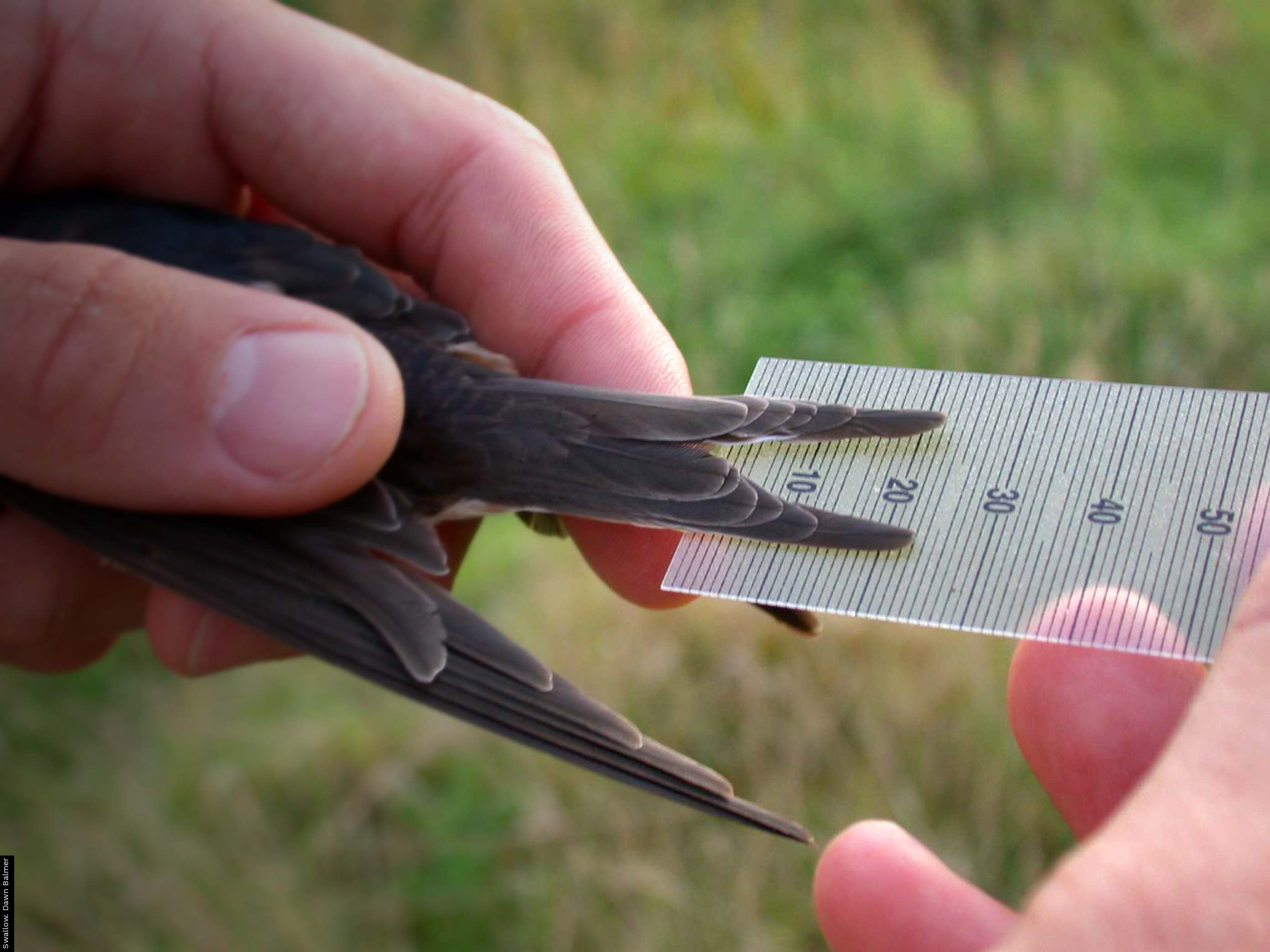




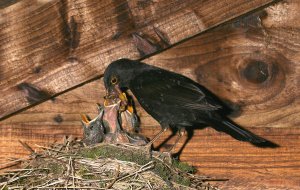
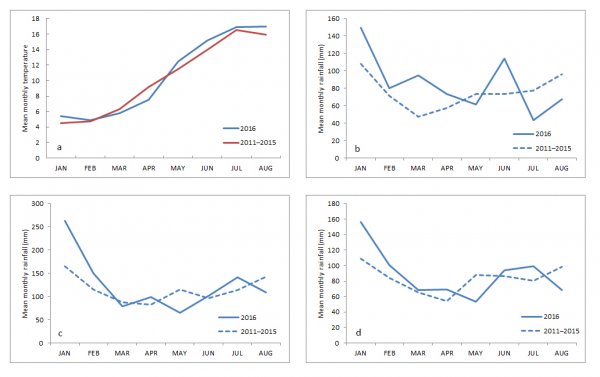
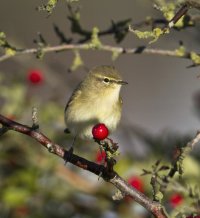
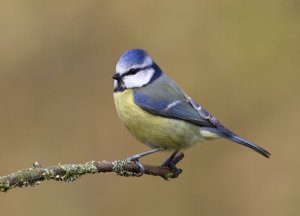


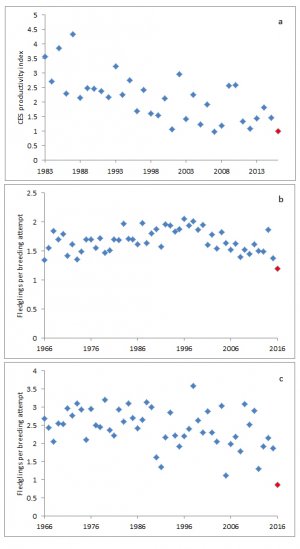




Share this page